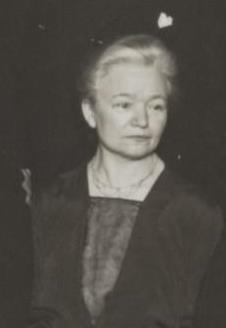Jantina Tammes facts for kids
Quick facts for kids
Jantina Tammes
|
|
|---|---|

Tine Tammes (1926)
|
|
| Born | 23 June 1871 |
| Died | 20 September 1947 (aged 76) Groningen, Netherlands
|
| Alma mater | University of Groningen |
| Scientific career | |
| Fields | Botany, genetics |
| Author abbrev. (botany) | Tammes |
Jantina "Tine" Tammes was a Dutch scientist. She was a botanist, studying plants, and a geneticist, studying how traits are passed down. She became the first professor of genetics in the Netherlands.
Contents
Early Life and Education
Jantina Tammes was born in Groningen, Netherlands, on June 23, 1871. Her father was a cocoa maker.
She went to high school for girls in Groningen. After that, she took private lessons in mathematics, physics, and chemistry. In 1890, she joined the University of Groningen. She was one of only eleven female students there. She could attend classes but not take exams. Still, she earned a teaching diploma.
Research and Discoveries
In 1897, Tammes started working as an assistant. She helped Jan Willem Moll, a botany professor at the University of Groningen. In 1898, she got to do research in Hugo de Vries's lab. He was a plant physiology professor in Amsterdam. There, she learned about how living things change and how traits are passed down.
In 1901, Tammes was the first Dutch woman to get a special scholarship. It was for plant research in Java. But she couldn't go because of her health. Instead, Professor Moll offered her a place in his lab.
Important Studies
Over the next ten years, Tammes wrote several important papers. In one paper, she was among the first Dutch scientists to write about how plants change. She also wrote about how traits are passed on.
In 1907, she published a book called The Flax Stem. In this book, she used statistics and math to explain how traits are inherited in flax plants. This was a new way to study genetics.
Becoming a Professor
In 1911, Tammes received an honorary doctorate. This was a special award for her work in zoology and botany. From 1912, she took over from Professor Moll. She became the head of practical microscopy.
In 1919, she was made a special professor. Her field was variability and genetics. This made her the very first professor in the Netherlands in this area of science.
Later Life and Legacy
From 1932 to 1943, Jantina Tammes was an editor for the science journal Genetica. She was also active in a group for women in higher education. She strongly disagreed with the idea of eugenics. This was a belief that tried to control human traits.
Jantina Tammes passed away in Groningen in 1947. Her work helped us understand how traits are inherited.
See also
 In Spanish: Jantina Tammes para niños
In Spanish: Jantina Tammes para niños

